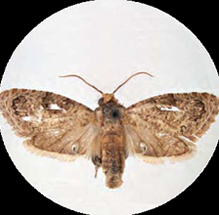Fertilizers are responsible for over half of global food production, but there are areas in world with nutrient deficiency and other areas of nutrient excess. Managing soil fertility requires careful application of science and skill to meet production, environmental, and social goals. Writes By Dr. Rob Mikkelsen, Ph.D. (Soil Science)
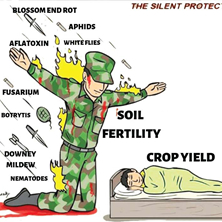 Getting crops off to a good start is critical for achieving high yields. During this early stage of growth, seedlings are especially vulnerable to many environmental and biological stresses. Protecting plants from stress and disease begins with providing balanced nutrition from planting through harvest. The critical link between plant nutrition and disease resistance has become apparent as the frontiers of plant health are better understood. A few of these examples are explained here:
Getting crops off to a good start is critical for achieving high yields. During this early stage of growth, seedlings are especially vulnerable to many environmental and biological stresses. Protecting plants from stress and disease begins with providing balanced nutrition from planting through harvest. The critical link between plant nutrition and disease resistance has become apparent as the frontiers of plant health are better understood. A few of these examples are explained here:
Potassium
Potassium plays an essential role in many well-recognized metabolic processes for plants. Potassium’s contribution to sustaining high yielding crops with top quality is well understood. However, the role of potassium in plant stress resistance is less known and appreciated. Potassium is unique among the essential mineral nutrients in its role for plant survival against environmental stress, pests, and diseases.
Supplying adequate potassium to crops through proper fertilization is a simple way to lower the requirement for pest-control treatments that may be costly, timeconsuming, and troublesome. The frequently observed benefits of potassium on plant health were reviewed by Wang et al. (2013), which summarizes many recent scientific studies.

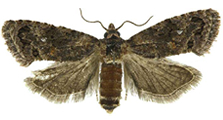 The Kenya Plant Health Inspectorate Service (KEPHIS) is working with over 200 horticultural produce exporters to the European Union (EU) and Australian markets to formulate strategies to curb False Codling Moth (Thaumatotibia leucotreta) pest which has led to some rejection of the country’s products at international markets.
The Kenya Plant Health Inspectorate Service (KEPHIS) is working with over 200 horticultural produce exporters to the European Union (EU) and Australian markets to formulate strategies to curb False Codling Moth (Thaumatotibia leucotreta) pest which has led to some rejection of the country’s products at international markets.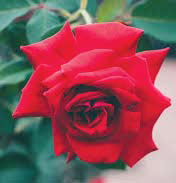 Overproduction, low demand, high cost of inputs, VAT that isn’t refunded by the government in time, unfavourable exchange rates, volumetric freight costing, high cost of labour and entrance of new players. When talking with the exhibitors at the IFTEX, it’s the combination of these factors that contribute to the challenges that small holder growers are facing.
Overproduction, low demand, high cost of inputs, VAT that isn’t refunded by the government in time, unfavourable exchange rates, volumetric freight costing, high cost of labour and entrance of new players. When talking with the exhibitors at the IFTEX, it’s the combination of these factors that contribute to the challenges that small holder growers are facing. Why does something you could just pluck out of the ground cost so much?
Why does something you could just pluck out of the ground cost so much?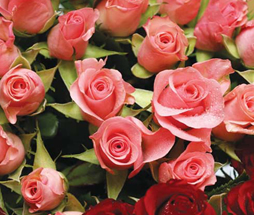 Kenya is the leading global exporter of cut roses to the European Union with a market share of 38 percent. Yet, the country only has a 1 percent market share in the U.S. where it competes against major suppliers such as Colombia and Ecuador which have lower logistics costs and shipping times. With high-quality flowers, a strong trade association and large U.S. market, however, there is an opportunity for Kenya to expand duty-free exports of flowers to the U.S. under the African Growth and Opportunity Act (AGOA)
Kenya is the leading global exporter of cut roses to the European Union with a market share of 38 percent. Yet, the country only has a 1 percent market share in the U.S. where it competes against major suppliers such as Colombia and Ecuador which have lower logistics costs and shipping times. With high-quality flowers, a strong trade association and large U.S. market, however, there is an opportunity for Kenya to expand duty-free exports of flowers to the U.S. under the African Growth and Opportunity Act (AGOA) Dudutech has announced the launch in Kenya of NEMguard SC to control the country’s most financially damaging crop pest with zero risk of triggering crop rejections by European Union importers on residues. NEMguard SC is lethal to plant parasitic nematodes (PPNs), but has been classified as having no harmful effects on humans, animals, or the environment, which means it does not appear on the MRL (Maximum Residue Limit) list regulating ingredients growers can use on exported crops.
Dudutech has announced the launch in Kenya of NEMguard SC to control the country’s most financially damaging crop pest with zero risk of triggering crop rejections by European Union importers on residues. NEMguard SC is lethal to plant parasitic nematodes (PPNs), but has been classified as having no harmful effects on humans, animals, or the environment, which means it does not appear on the MRL (Maximum Residue Limit) list regulating ingredients growers can use on exported crops.
 My advice to flower farmers on the critical issues in plant nutrition in floriculture would be as follows:-
My advice to flower farmers on the critical issues in plant nutrition in floriculture would be as follows:-